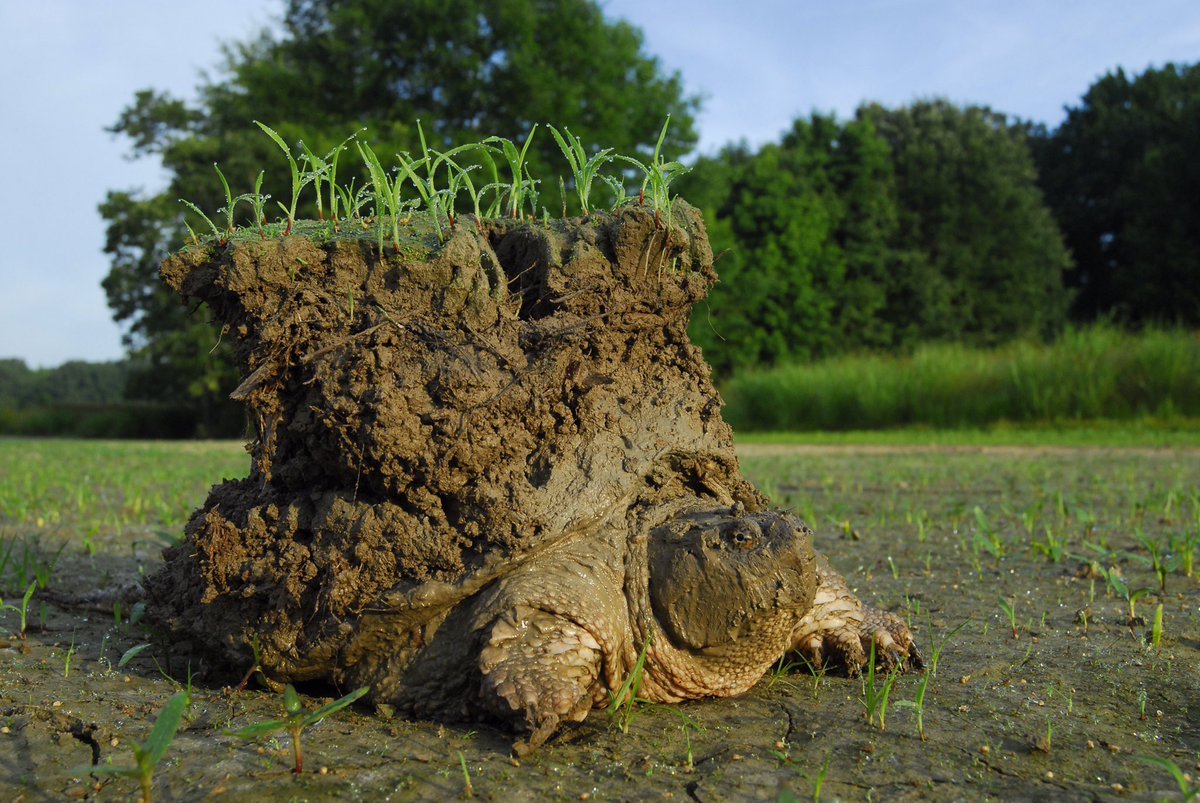
Viral image of turtle with a 'little living world' on her back is real & here's the truth behind it
The curious photo of a turtle with a little world on her back has been making the rounds on social media and evoking memories of ancient cosmologist myths. Many thought the pic was fake, but it turns out it’s authentic, and the turtle in the pic is part of an investigation from Task Force Turtle.
According to several myths from India, China, and some native American communities, a turtle holds the whole world on her back, and this famous snapping turtle is probably the closest we'll get to that gorgeous image.
THE TASK FORCE TURTLE PROJECT
Task Force Turtle is a project that involves herpetologists and undergraduate students at Washington College and other local institutions in Maryland. They have been studying the ability of turtles to migrate every winter to the same place.
The fascinating photo of a common snapping turtle with a small ecosystem in tow has sparked people’s curiosity about the project and how exactly did the “little world” appear on the turtle’s back.
It turns out, the reptile in the pic is one of the thousands of snappers, and painted turtles tracked down with radio transmitters during the last decade. The transmitters are often installed in their shells in summer, to trace the way to their hiding places when the cold arrives.
“We follow them quite literally 24 hours a day,” said Aaron R. Krochmal, a professor of biology at Washington College and one of the researchers who originated the project. For him, the exciting thing about turtles in that area is that they offer the opportunity to study migration in an incredibly detailed way, as he explained to Live Science.
"What we think is super cool is that these animals do use a particular mud-place if you will, a wallow. And they return each year to the same exact spot, and by exact spot, I mean to the centimeter.”
THE SMALL WORLD
Regarding the turtle with the small living world on its back, Krochmal reported that the animal had recently woken up from hibernation, after spending two weeks buried by a lake that had dried up. For a few days, they thought that the radio transmitter in its shell had stopped working.
They also considered that the turtle had already emerged but left the transmitter behind, until the reptile made its way out of the once muddy place.

Source: Twitter/TaskForceTurtle
It was Timothy Roth, a professor of psychology at Franklin and Marshall College, who snapped the now viral picture. The earth above the turtle dried, sticking to her shell, probably the reason why it took her longer to come out in the first place.
Krochmal noted that the turtle weighs about 6 kilograms, and the "small world" of 25 cm on her back weighed about 8 kg. Despite the extra weight, the turtle was able to move without effort.
THE INVESTIGATION
What attracts Krochmal, Roth and their colleagues to these creatures is that tendency to follow the same path to the same mud hideout every year. They also find very interesting their ability to survive under the earth for months, without climbing in search of air.
However, the research has focused on studying what these creatures have in mind to discover what it is that makes them or allows them to repeat the same trip every year, and as a part of the study they have been given a drug called scopolamine.
This produces a block in the brain to bind to the neurotransmitter acetylcholine, which prevents the brain from forming or accessing memories.
What they found out is that the drugged turtles lose their way, but once the drug effects pass, they return to their path until they reach their destination, explained Krochmal.
